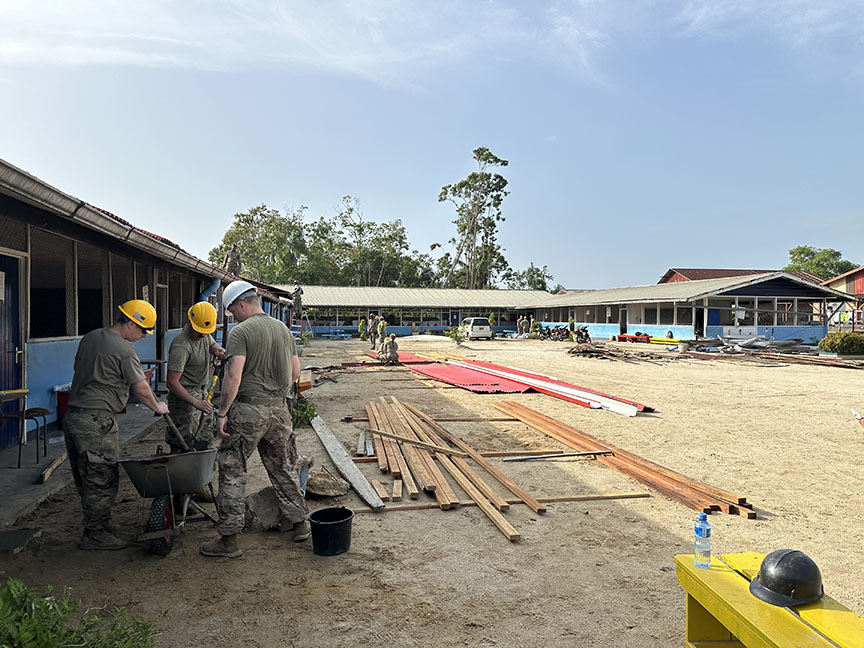Mines Faculty Travel to Suriname with South Dakota National Guard to Discuss Academic Partnership Opportunities

A recent trip to Suriname has spurred various collaboration ideas between South Dakota Mines, the South Dakota National Guard (SDNG), and the South American country.
The SDNG facilitated the academic and government exchange as part of the State Partnership Program (SPP), a more than 30-year military-to-military program that now includes 106 partnerships with 106 nations worldwide. Since its founding, the program has advanced U.S. national security by developing relationships with allies and partners around the globe.
The exchange with Mines aimed to expand the collaboration to include civilian-to-civilian academic exchanges and incorporate the university in planned engineering operations.
“We are always looking for ways to improve and expand our partnership with Suriname," said Chief Warrant Officer 2 Brayden Nelson, SPP coordinator for the SDNG. “SDSM&T brings significant expertise to the partnership and can assist the SDNG in expanding into academic and government relationships. Eventually, a goal would be to incorporate Mines students and faculty into our annual engineering projects to create more substantial scopes for the projects.”
Discussion on the collaboration began last fall.
“We had a meeting with the National Guard, and they spoke about some projects they were either working on or would like to work on that required scientific or engineering knowledge,” said Laurie Anderson, Ph.D., Mines vice president of research.
Anderson, along with Rudrajit Mitra, Ph.D., associate professor in the Department of Mining Engineering and Management, and Sarah Keenan, Ph.D., assistant professor in the Department of Geology and Geological Engineering, spent a week in Suriname meeting with faculty from the country's only university, Anton de Kom University, the United States ambassador to Suriname, and other senior embassy staff, as well as Surinamese geologists and mining engineers.
The faculty also had an opportunity to visit a school the SDNG and the Suriname military
are refurbishing together. “This was a great opportunity to see how much our National
Guard contributes to Suriname and to see where Mines can fit into the partnership,”
Mitra said.
The South Dakota Board of Regents is reviewing a Memorandum of Understanding between Mines and Anton de Kom University to facilitate cooperative research and educational programming.
“There are a lot of opportunities across various departments,” Anderson said, referring to virtual courses, research projects, engineering design projects, and exchange programs. “This could also help encourage faculty to become Fulbright Specialists.”
A program of the U.S. Department of State, the Fulbright Specialist Program is a unique opportunity for U.S. academics and established professionals to engage in two- to six-week, project-based exchanges at host institutions across the globe.
Mitra and Keenan are already considering how their respective departments can work
with Suriname.
With two active mines in the country, Mitra said there are opportunities for the university to work with the country's largest industry, specifically in addressing health and safety issues.
Keenan added that the climate and biota of Suriname, with 95 percent rainforest cover making it the most forested country on earth, is quite different than western South Dakota, providing a great opportunity for students to study distinct geological processes.
““In western South Dakota, we can drive out, look at rocks, and physically pick up an unweathered rock. In Suriname, because it is so warm and wet, you have to dig for hundreds of feet to find a fresh rock,” Keenan said. “I think there is a lot of great potential to collaborate with researchers and integrate students down there on topics like climate change, weathering of rocks, and trying to find ways to explore rocks and resources that are not easily visible from the surface.”